The Leo constellation is best seen in the night skies of the northern hemisphere from March throughout April and into May, and is well-known for the galaxies that lie within its boundary.
The return of Leo the Lion into a favourable position in the night sky marks the transition to the galaxies of spring.
As the winter Milky Way tilts out of the way, we are presented with a sky that looks into deep galactic space. This is why springtime is known as Galaxy Season among astronomers.
Celebrate the return of Leo with our deep-sky exploration of galaxies located in the constellation, which includes objects from the Messier Catalogue and M96 Group members.
Download a PDF chart to help you take our tour of Leo at your telescope.
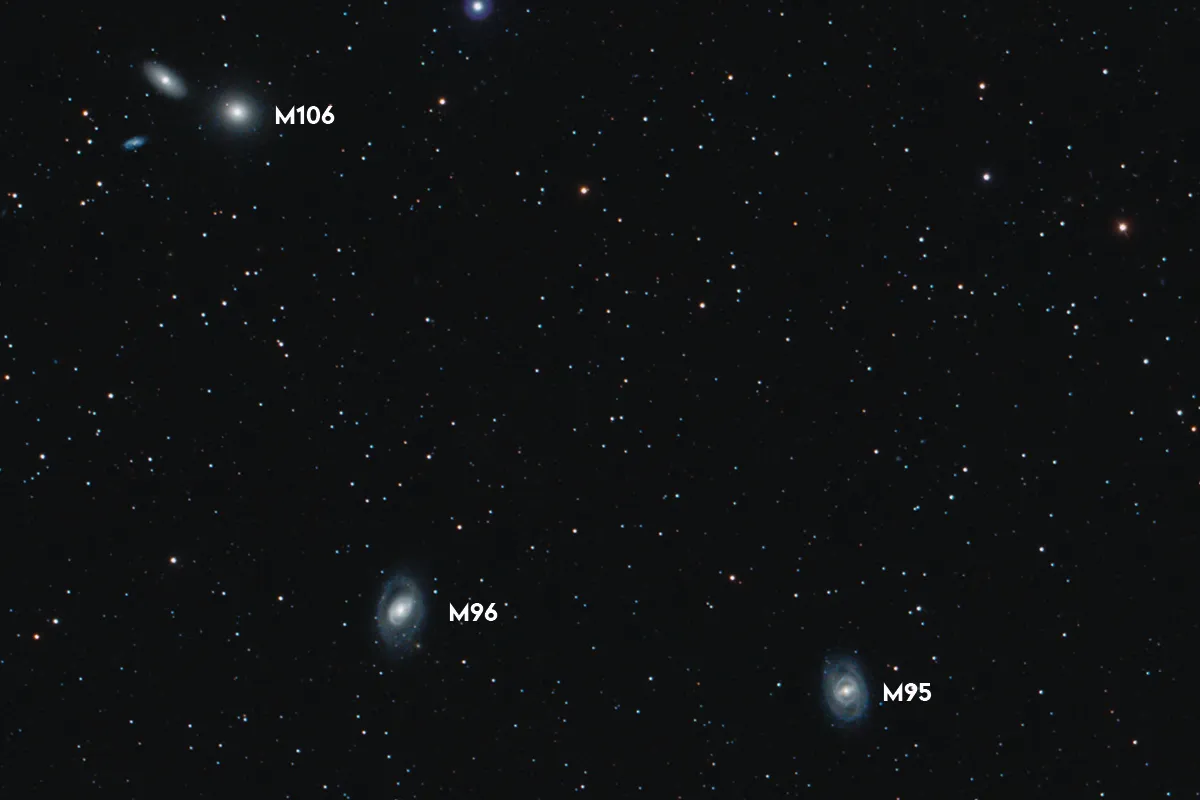
Leo contains many galaxies and two famous triples: Leo Triplet M65, M66 and NGC 3628 near the Lion’s back leg, and M95, M96 and M105 near its belly, 3.6˚ northeast of mag. +3.8, Rho (ρ) Leonis.
All of the targets on our Leo tour are best seen with medium or large telescopes.
More deep-sky tours:
- 6 open clusters in Auriga
- 6 deep-sky objects to observe around Polaris
- 7 galaxies to observe in the night sky
1 - M95
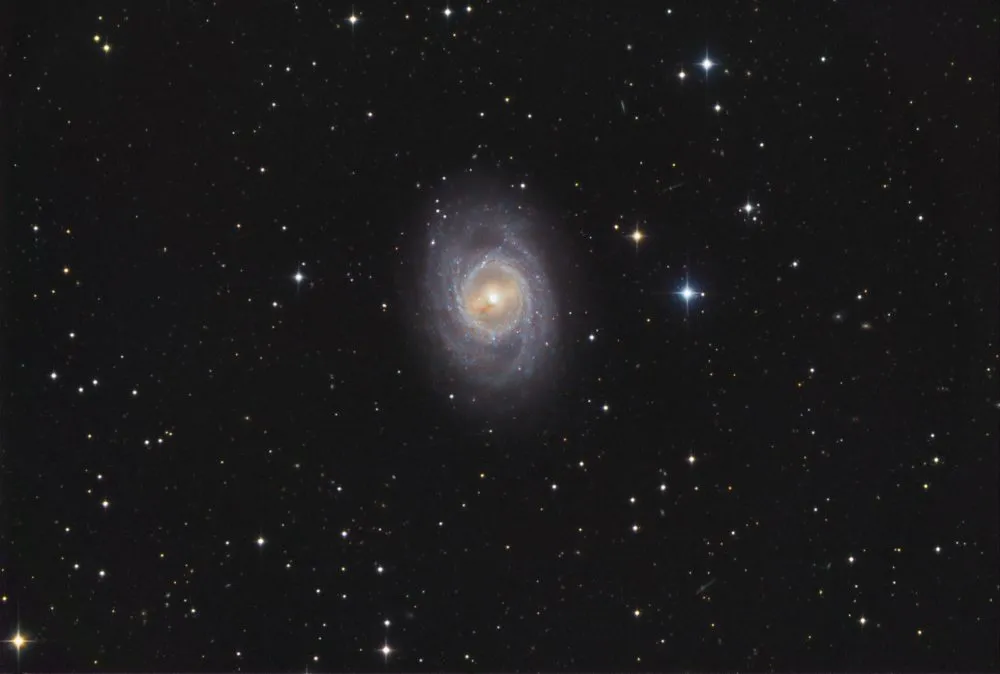
Located 33 million lightyears from the Sun, M95 is a mag. +9.7 barred spiral appearing surprisingly bright through a small telescope. It looks like a diffuse glow, intensity rising sharply to a bright core. Larger scopes show its glow is slightly elongated.
Through a 300mm scope, M95 appears 5x3.5 arcminutes in size, its bright core roughly one-quarter of an arcminute across. Magnifications over 200x reveal a mottled texture across the outer regions.
2 - M96
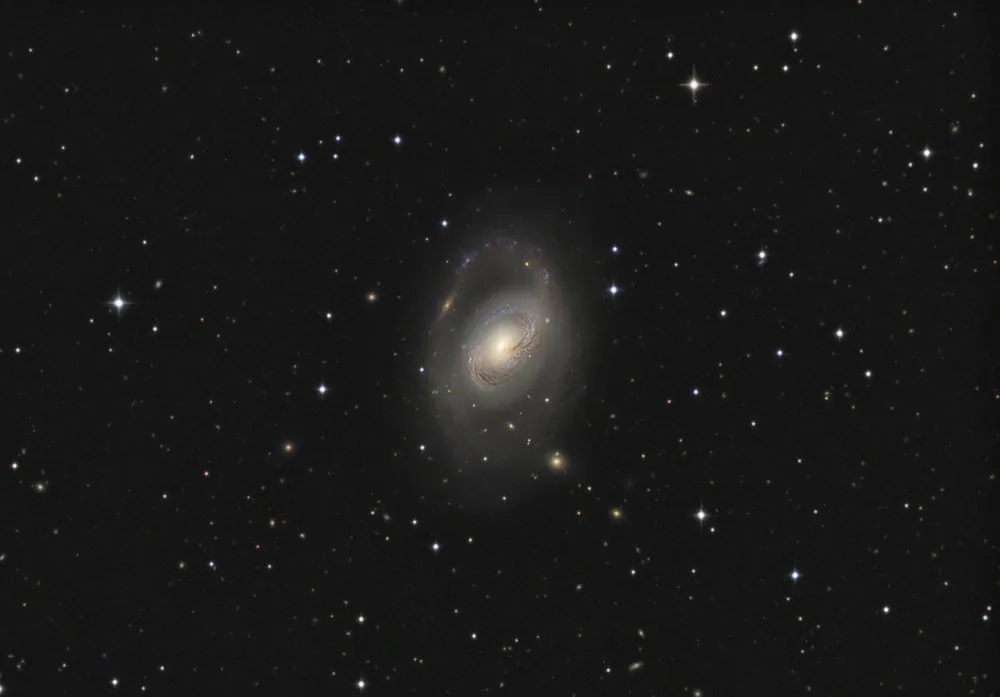
M96 is visible in the same low-power field as M95, 41 arcminutes to its east and a fraction north. It’s the lead entry in the M96 Group of galaxies and also the brightest at mag. +9.2. M96 is an intermediate spiral, a class of galaxy that has a core that’s somewhere between barred and circular in shape.
We see an object with two regions, an outer halo and a compact core. A 250mm scope reveals the core and outer halo are elongated, with the halo appearing 4x2.5 arcminutes in size, surrounding an elliptical core measuring 2x0.5 arcminutes.
3 - M105
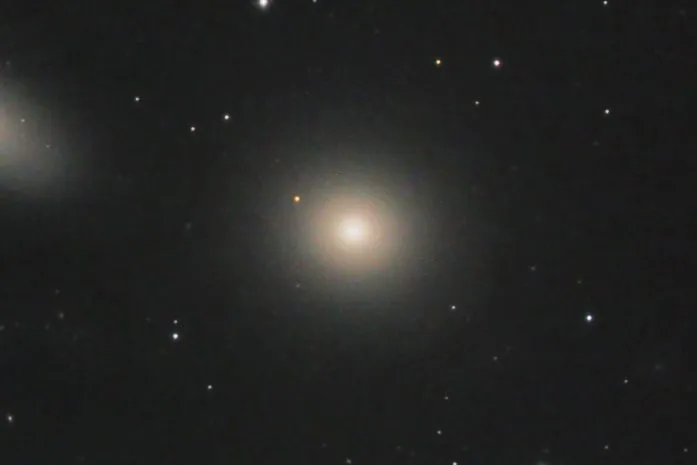
M105 is classed as an elliptical galaxy, a large ball of stars with no hint of spiral structure. It sits 48.3 arcminutes north-northeast of M96 and shines with an integrated magnitude of +9.3. M105 appears to brighten smoothly to a point nucleus. A 300mm scope reveals a glow 4x3 arcminutes in size.
4 - NGC 3384
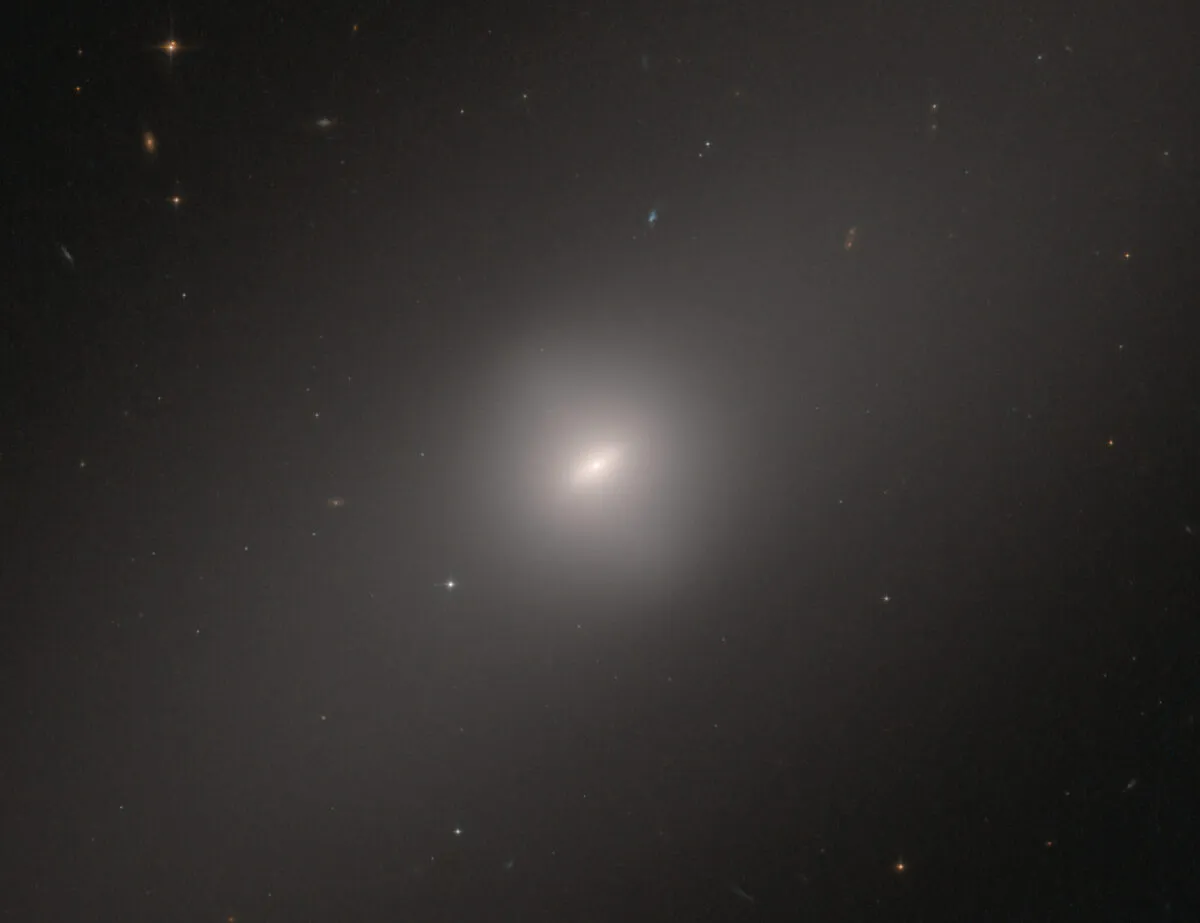
The ancient elliptical NGC 3384 is easy to find from M105, lying just 8 arcminutes to the east-northeast. NGC 3384 has an integrated magnitude of +10.0. Since M105 and NGC 3384 are easy to get in the same field of view, it is interesting to compare them. NGC 3384 is obviously dimmer and smaller than M105, appearing like a mini version of the brighter galaxy.
A large scope highlights the differences well, NGC 3384 with a more pronounced elongation, nearly 4 times as long as it appears wide. Its central core appears round and concentrated to a more star-like centre, instead of the sharp point of M105. The galaxy lies at a distance of 35 million lightyears and is an M96 Group member.
5 - NGC 3412
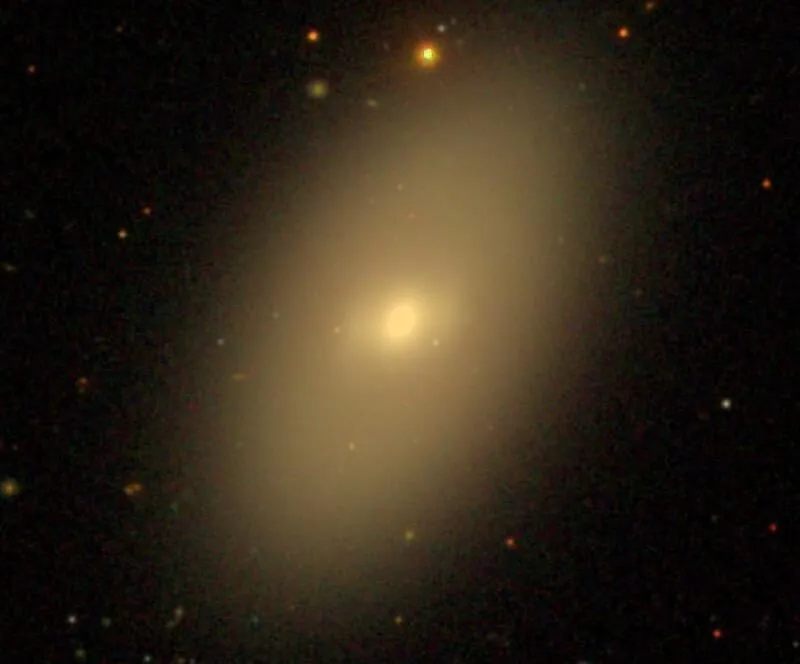
Lenticular galaxy NGC 3412 shines with an integrated magnitude of +10.6 and is to be found northeast of the main trio. A lenticular shows a core bulge with a flattened disc but no spiral structure. Find NGC 3412 by centring on M105 then heading north. Move past a pair of mag. +8.4 and +9.4 stars (HIP 52744 and HIP 52746), arriving at a mag. +8.6 star (HIP 52775) 0.8˚ north of M105. NGC 3412 is 0.8˚ east of this star.
The surface brightness is reasonably high and the galaxy stands out well through smaller apertures.
A 150mm scope shows it to have a star-like nucleus, while larger scopes reveal an elongated shape surrounding a circular core approximately one-third of an arcminute in diameter.
6 - NGC 3377
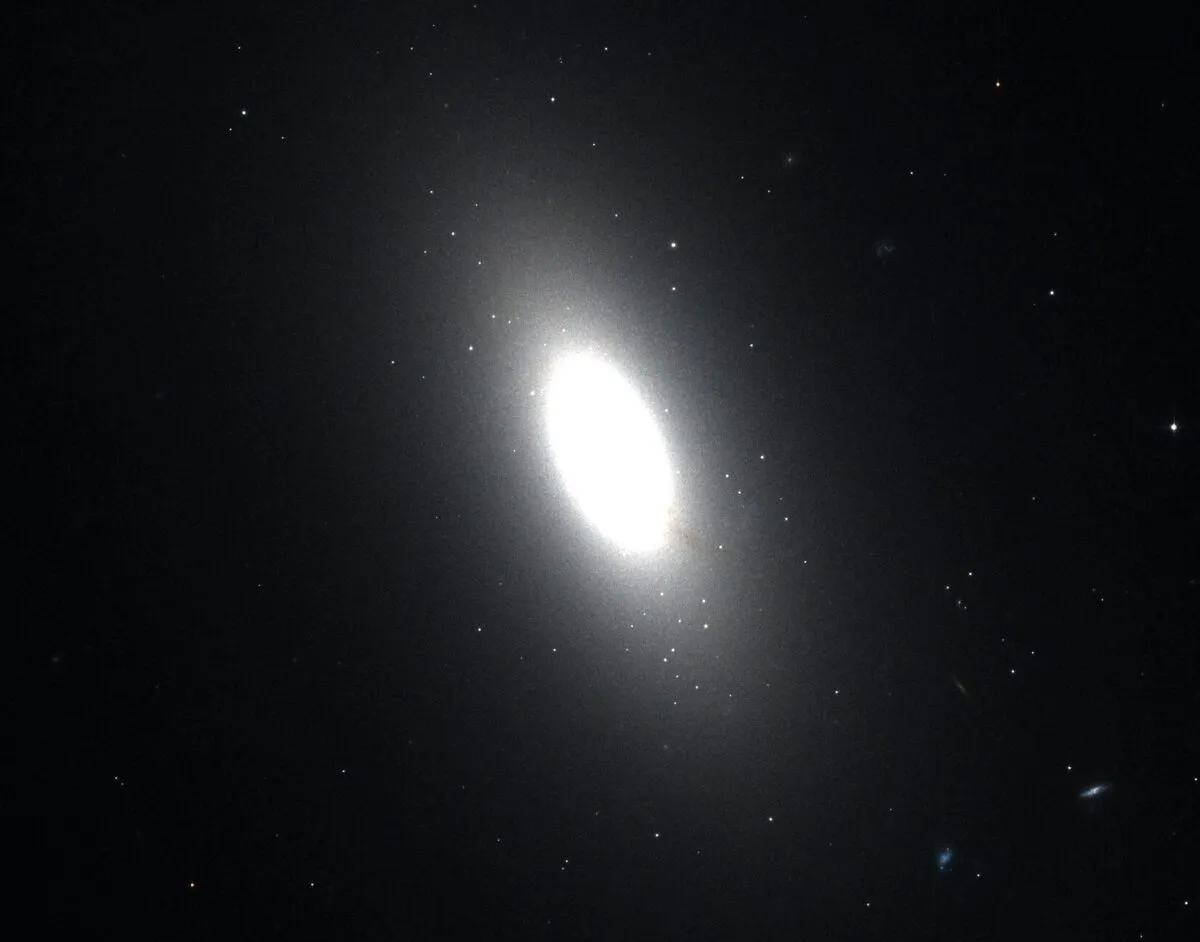
Our final M96 Group target is NGC 3377, an elliptical galaxy located 1.4˚ north of M105. It shines with an integrated magnitude of +10.2, most of which comes from its compact, circular core region. This object is a nearer member of the group, at an estimated distance of 26 million lightyears.
A 250mm instrument reveals a core surrounded by an elongated outer halo approximately 2x1 arcminutes in size. A 300mm scope virtually doubles the galaxy’s size, revealing it as an elongated halo with an impressively bright core.
Pete Lawrence is an experienced astronomer and a co-host of The Sky at Night. This tour originally appeared in the March 2021 issue of BBC Sky at Night Magazine.
